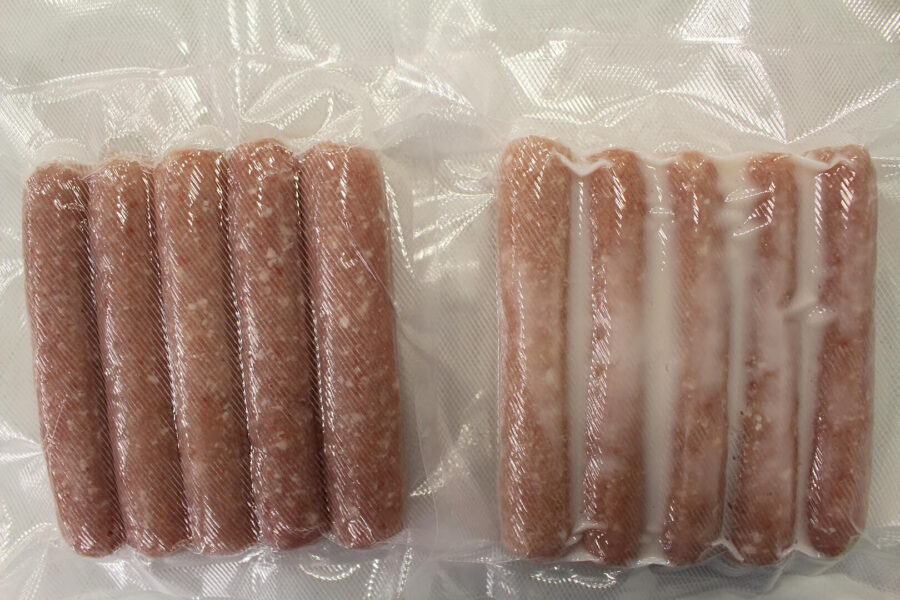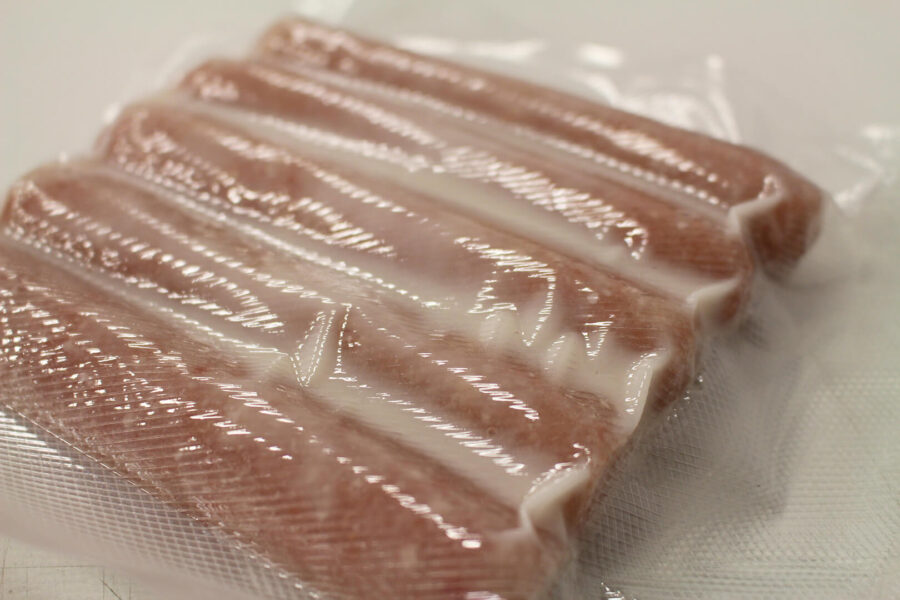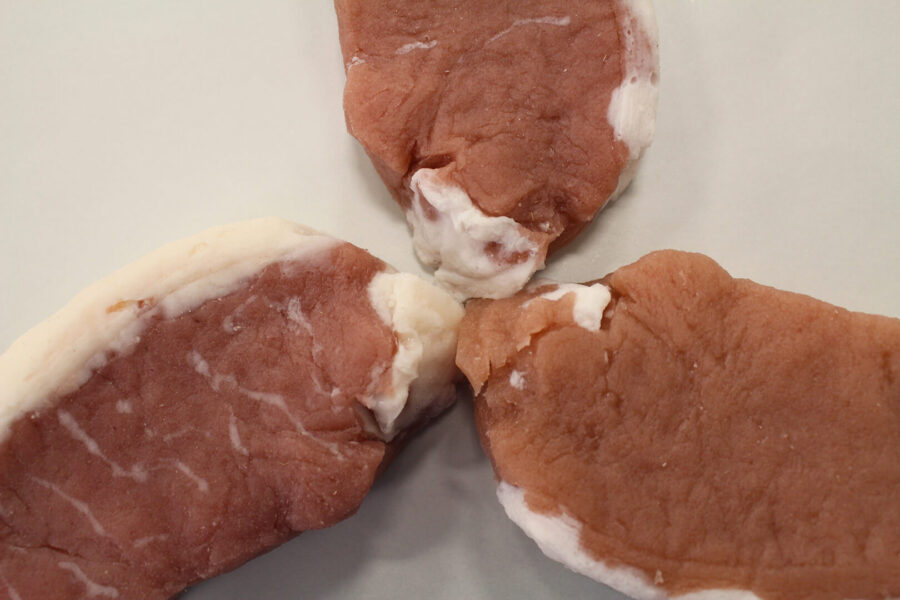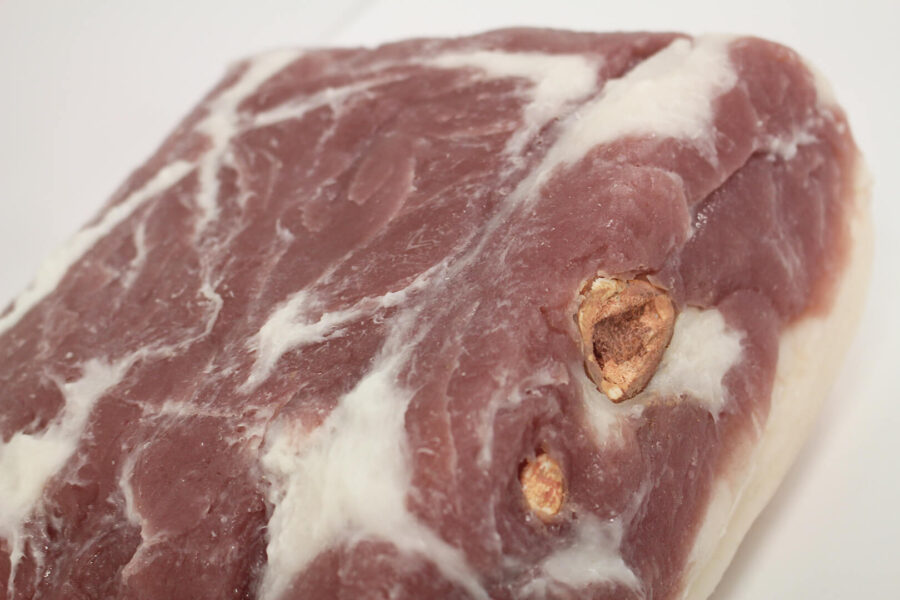Cuts of faux pork meat might cause some double takes. But that’s what makes them so good for attracting attention at events. We’ve had multiple clients ask us to create realistic models of pork meat so they can reach their audience of consumers or pork industry professionals more effectively.
Our clients at NutriQuest don’t raise pigs, but they provide feeds and other products to pig farmers. Their sales teams try to show the impact of meat quality in order to explain how NutriQuest’s pig feeds improve meat quality and lead to higher sale prices for farmers. They used to take actual cuts of meat to events, but as you might imagine, that got messy.
NutriQuest asked us to create a collection of faux pork meat cuts they could display instead. First, they wanted a display to show how one common evaluation of pork belly firmness works. So we engineered two pieces of artificial pork meat showing different firmnesses. Like all our lifelike reproductions, our fake meat is highly realistic. One of the faux meat pieces is properly firm, and the other is noticably limp.
NutriQuest also asked for other fake meat displays. One of them shows different levels of marbling within pork chops. Another shows how meat quality affects sausages. The lower-quality sausages have “greased out,” leaving artificial fat inside the package, while the other faux sausages are free from extra grease.












